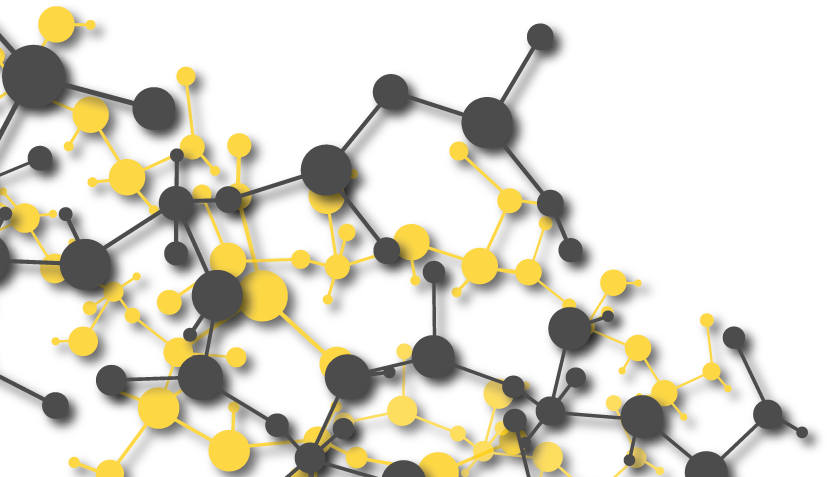HQEE is the premier diol chain extender for MDI-based polyurethane elastomers. Compared to 1,4-butanediol, the workhorse of the industry, HQEE-MDI based polyurethanes exhibit a higher hard-block melt temperature, superior tensile properties, split-tear resistance, hardness and rigidity, resiliency, low hysteresis, and enhanced thermal aging performance.
Let’s take a look at five useful facts about Gantrade’s high-purity HQEE as a chain extender in polyurethane elastomers. As a leader in the global distribution of HQEE, we pride ourselves on providing our customers with the latest information to help them select the right chemical products for their product specifications.
1. Performance attributes of HQEE MDI-based polyurethane elastomers
When it comes to performance in extreme environments, HQEE is the chain extender of choice for most formulators. As a chain extender, HQEE reacts with MDI and MDI prepolymers to create crystalline “hard-segment” domains that efficiently microphase separate. Many studies have shown that the properties of a polyurethane are highly dependent on the characteristics and perfection of this hard-block phase.
HQEE-MDI really stands out from the competition with regard to achieving the following specific product attributes:
- Superior elevated temperature and heat-aging properties
- Hardness and rigidity
- Low heat buildup or hysteresis under dynamic flex conditions
- Excellent resiliency and rebound characteristics
- Tear strength and split-tear resistance
- Enhanced low-temperature flex strength due to effective microphase separation
Gantrade promotes the use of HQEE as a urethane chain extender, especially for MDI systems, and we offer a high purity (>99%) grade for this application.
Under elevated temperature conditions, HQEE MDI elastomers are the preferred system
The melting temperatures of the HQEE-MDI hard domain are elevated in polyurethane elastomers versus polyurethanes that are chain-extended with other diols. Based on DSC results, HQEE extension produces a 30 °C higher hard-segment melting temperature and a higher melt enthalpy (the degree of heat required to melt the hard segment) indicating superior elevated temperature properties of HQEE-MDI compared to BDO-MDI elastomers.
HQEE-based systems show greater phase segregation and a higher order of hydrogen bonding in the hard domain of polyurethanes. The rigid aromatic structure promotes hard segment packing and the symmetrical -OCH2CH2-segment in HQEE enables intermolecular hydrogen bonding with urethane linkages. These aggregate forces effectively facilitate hard-segment packing, leading to well defined microphase separation morphologies in the polyurethane.
HQEE is an ideal chain extender for TPUs
The greater phase segregation and higher order of hydrogen bonding in the hard domain of HQEE-MDI polyurethanes are ideal for thermoplastic polyurethane (TPU) applications, leading to elastomers that exhibit the highest levels of mechanical properties and thermal performance. The Tg of a PTMEG 1000/MDI/HQEE TPU was reported as -48°C; the Tg of a PBA 1000/MDI/HQEE TPU was -30°C, thus indicative of a high degree of microphase separation.
In thermoplastic polyurethane (TPU) compositions, un-crosslinked HQEE-MDI domains can be melted and will flow at elevated temperatures to allow thermoplastic processing. The associated hard segment domains reform when cooled, to form tough elastomeric compositions. Based on DSC results, HQEE extension produces about a 30°C higher hard segment melting temperature compared to 1,4-BDO elastomers. HQEE-MDI systems often replace BDO-PPD TPUs to gain similar thermal and dynamic performance properties.
Formulators can produce TPUs in a one-step bulk polymerization wherein the HQEE is first dissolved in the polyol at temperatures above 100°C and then reacted with MDI by mixing below 100°C (e.g. 80°C).
HQEE is the chain extender of choice in demanding polyurethane applications
Exemplary applications for HQEE include industrial wheels and tires; skateboard, in-line skate, and amusement park wheels; pipe linings and coatings; rollers, industrial roll covers, gaskets, oil-field seals, conveyor belts; oil field and mining equipment components, cyclone liners; and other high-performance end uses.
The excellent dynamic properties of PTMEG polyether-based HQEE-MDI elastomers are important in applications such as high performance wheels, rollers, and tires where low heat buildup (hysteresis) is important under dynamic flex conditions.
The HQEE-MDI elastomer series compares favorably with many of the performance attributes seen in MOCA-TDI systems. Furthermore, HQEE-MDI elastomers show improved dynamic properties, rebound, and tear strength.
The high melting point of HQEE requires higher processing temperatures
There are some challenges associated with processing HQEE due to its high melting point, ~98°C (~208°F), and the fact that HQEE does not supercool (HQEE will crystallize quickly below its melting point). Accordingly, it’s important to uniformly heat and mildly agitate HQEE in the melting tank and preheat the prepolymer to 90°C (194°F) or above before mixing in HQEE. In addition, all HQEE transfer lines should be heated to 110°C (230°F) and insulated to prevent cold spots that might cause HQEE to crystallize in the lines and result in an inaccurate mix ratio. The temperature of the mold should be 110°C (230°F) or higher to prevent defects in the cast parts.
“Starring” on the surface of parts can be observed when processing HQEE. This phenomenon has been attributed to the phaseout of the reaction product of HQEE and free MDI monomer, especially on mold surfaces at temperatures lower than 110°C (230°F). It has been reported that low free MDI prepolymers exhibit a much lower tendency to starring because of the lower free MDI monomer content.
Blending HQEE with polyols like PTMEG or other diols like 1,4-BDO, or TMP can facilitate processing.
Learn more from the team at Gantrade
For more than 40 years, manufacturers worldwide have counted on Gantrade for steady supply and cost-effective chemical solutions to meet their exact product specifications. To learn more about HQEE and other chemicals supplied for industries ranging from paint and coatings to adhesives, sealants and elastomers, and much more, contact our team of experts today.





.png?width=826&name=HQEE_CTA%20(1183%20%C3%97%20190%20px).png)










